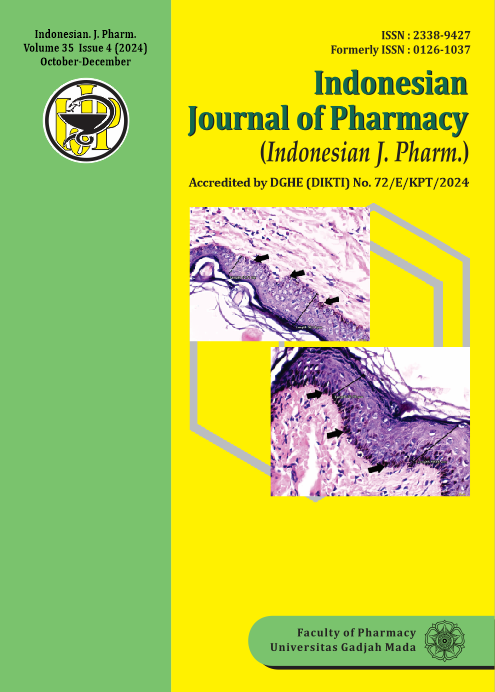Prevalence, Attitude and Practice of Herbal Medicine in Bahrain
Abstract
In the last few years, there has been a growing interest in using herbs worldwide for treating various diseases, however, there is not much knowledge about the prevalence of herbal medicine (HM) use in Bahrain. The objective of this study is to assess the prevalence, attitude, perception, and practice of using HMs by the Bahraini population. A cross-sectional study was conducted on 694 individuals aged 18–65 years from the Kingdom of Bahrain. A snowball non-random sampling design with an electronically distributed structured questionnaire was used to collect data. The questionnaire had 19 questions divided into four themes. Information was obtained on sociodemographic characteristics, perceptions, attitudes, and the practice of using HMs among participants. Most of the respondents (73.5%) were females. 73.6% of the participants were interested in HMs, and approximately 90.5% were interested in receiving more information about HMs. It was found that 92.4% of participants declared to have used HMs; with 86.7% of them applying HMs for therapeutic purposes; 61.6% of them reporting partially successful efficacy. 85.6% of the sample believed that the reason for using herbs was the lower rate of side effects compared to conventional medicines. More than half of the participants thought that herbs were safer than conventional medicines (61.8%). Additionally, most of the participants used the internet and social media as their main sources of information (80.5%), while 78.9% got information about herbs from friends. It was also found that there were several sociodemographic characteristics that affected individuals’ perceptions, practices, and attitudes; age and gender being the most common. HM usage is increasing in Bahrain for therapeutic purposes, and thus, it is vital to create trusted channels enhancing knowledge and awareness of the Bahraini population about the proper use of herbs and their potential side effects.
References
Abdo, A., Al-Zahim, A., Al-Malki, N., Al-Abdulkarim, F., Al-Sofayan, S., & Abunab, H. (2013). Use of alternative medicine by Saudi liver disease patients attending a tertiary care center: Prevalence and attitudes. Saudi Journal of Gastroenterology, 19(2), 75. https://doi.org/10.4103/1319-3767.108477
Akyol, A. D., Yildirim, Y., Toker, E., & Yavuz, B. (2011, February 15). The use of complementary and alternative medicine among chronic renal failure patients. Journal of Clinical Nursing, 20(7–8), 1035–1043. https://doi.org/10.1111/j.1365-2702.2010.03498.x
Al Akeel, M., Al Ghamdi, W., Al Habib, S., Koshm, M., & Al Otaibi, F. (2018). Herbal medicines: Saudi population knowledge, attitude, and practice at a glance. Journal of Family Medicine and Primary Care, 7(5), 865. https://doi.org/10.4103/jfmpc.jfmpc_315_17
AlBraik, F. A., Rutter, P. M., & Brown, D. (2008, July). A cross‐sectional survey of herbal remedy taking by United Arab Emirate (UAE) citizens in Abu Dhabi. Pharmacoepidemiology and Drug Safety, 17(7), 725–732. https://doi.org/10.1002/pds.1591
Al-Ghamdi, S., Aldossari, K., Al-Zahrani, J., Al-Shaalan, F., Al-Sharif, S., Al-Khurayji, H., & Al-Swayeh, A. (2017, April 4). Prevalence, knowledge and attitudes toward herbal medication use by Saudi women in the central region during pregnancy, during labor and after delivery. BMC Complementary and Alternative Medicine, 17(1). https://doi.org/10.1186/s12906-017-1714-3
Ang-Lee, M. K. (2001, July 11). Herbal Medicines and Perioperative Care. JAMA, 286(2), 208. https://doi.org/10.1001/jama.286.2.208Li, F. S., & Weng, J. K. (2017). Demystifying traditional herbal medicine with modern approach. Nature Plants, 3(8). https://doi.org/10.1038/nplants.2017.109
Applequist, W. L., & Moerman, D. E. (2011, April 14). Yarrow (Achillea millefolium L.): A Neglected Panacea? A Review of Ethnobotany, Bioactivity, and Biomedical Research1. Economic Botany, 65(2), 209–225. https://doi.org/10.1007/s12231-011-9154-3
Berdai, M. A., Labib, S., Chetouani, K., & Harandou, M. Atropa belladonna intoxication: a case report - PubMed. (2012, January 1). PubMed. https://pubmed.ncbi.nlm.nih.gov/22655106/
Çaksen, H., Odabaş, D., Akbayram, S., Cesur, Y., Arslan, K., Üner, A., & Öner, A. F. (2003, December). Deadly nightshade (Atropa belladonna) intoxication: an analysis of 49 children. Human & Experimental Toxicology, 22(12), 665–668. https://doi.org/10.1191/0960327103ht404oa
El-Dahiyat, F., Rashrash, M., Abuhamdah, S., Abu Farha, R., & Babar, Z. U. D. (2020). Herbal medicines: a cross-sectional study to evaluate the prevalence and predictors of use among Jordanian adults. Journal of Pharmaceutical Policy and Practice, 13(1). https://doi.org/10.1186/s40545-019-0200-3
Elolemy, A. T., & AlBedah, A. M. (2012, January 16). Public Knowledge, Attitude and Practice of Complementary and Alternative Medicine in Riyadh Region, Saudi Arabia. Oman Medical Journal, 27(1), 20–26. https://doi.org/10.5001/omj.2012.04
Halberstein, R. A. (2005, October). Medicinal Plants: Historical and Cross-Cultural Usage Patterns. Annals of Epidemiology, 15(9), 686–699. https://doi.org/10.1016/j.annepidem.2005.02.004
Hughes, G. D., Aboyade, O. M., Clark, B. L., & Puoane, T. R. (2013, February 18). The prevalence of traditional herbal medicine use among hypertensives living in South African communities. BMC Complementary and Alternative Medicine, 13(1). https://doi.org/10.1186/1472-6882-13-38
Joshi B. (2013). Herbal Cosmetics: A safe and effective approach. PharmaTutor. Retrieved from https://www.pharmatutor.org/articles/herbal-cosmetics-used-skin-hair-care
Li, F. S., & Weng, J. K. (2017, July 31). Demystifying traditional herbal medicine with modern approach. Nature Plants, 3(8). https://doi.org/10.1038/nplants.2017.109
Lynch, N., & Berry, D. (2007, June). Differences in perceived risks and benefits of herbal, over- the-counter conventional, and prescribed conventional, medicines, and the implications of this for the safe and effective use of herbal products. Complementary Therapies in Medicine, 15(2), 84–91. https://doi.org/10.1016/j.ctim.2006.06.007
Otoom S.A., Al-Safi, S.A., Kerem, Z.K., Alkofahi, A. (2006). The use of medicinal herbs by diabetic Jordanian patients. Journal of Herbal Pharmacotherapy 6(2):31-41. .https://pubmed.ncbi.nlm.nih.gov/17182483/
Sakai, T., & Morimoto, Y. (2022, October 4). The History of Infectious Diseases and Medicine. Pathogens, 11(10), 1147. https://doi.org/10.3390/pathogens11101147
“Top Social Apps Ranking - Most Popular Apps in Bahrain | Similarweb.” Similarweb (2023, August 10). Retrieved from Top Social Apps Ranking - Most Popular Apps in Bahrain | Similarweb
Unnikrishnan, R., Dev, S. A., & Jayaraj, R. (2020, October 30). Pitfalls and promises of raw drug identification techniques in the ayurvedic industry: an overview. 3 Biotech, 10(11). https://doi.org/10.1007/s13205-020-02482-0








